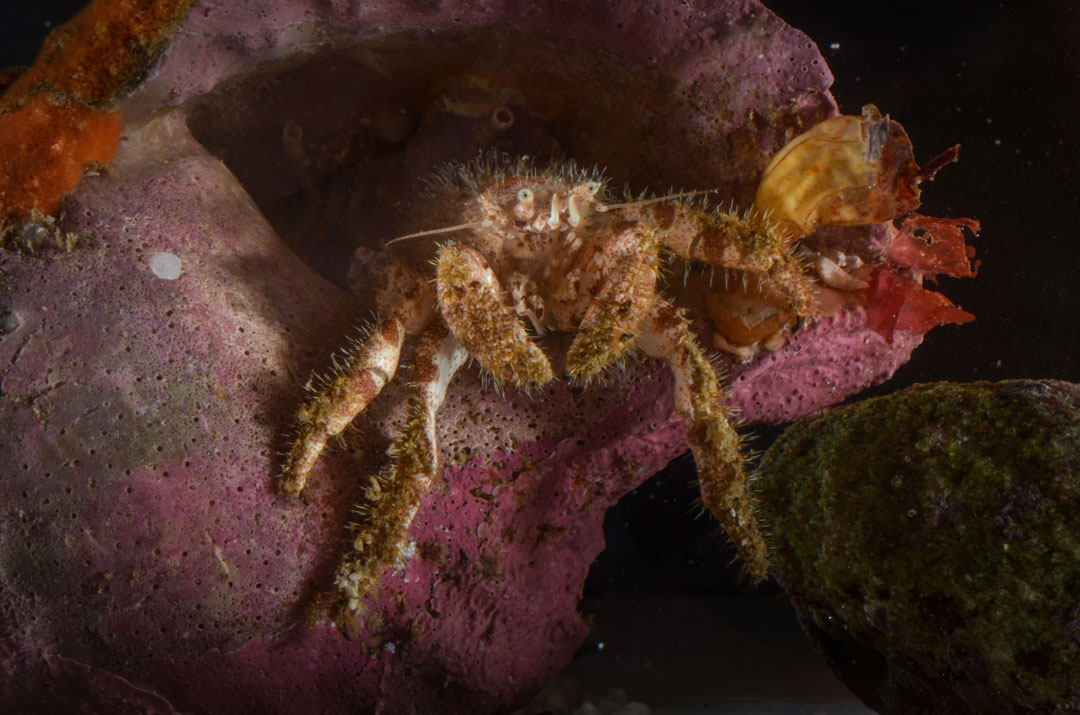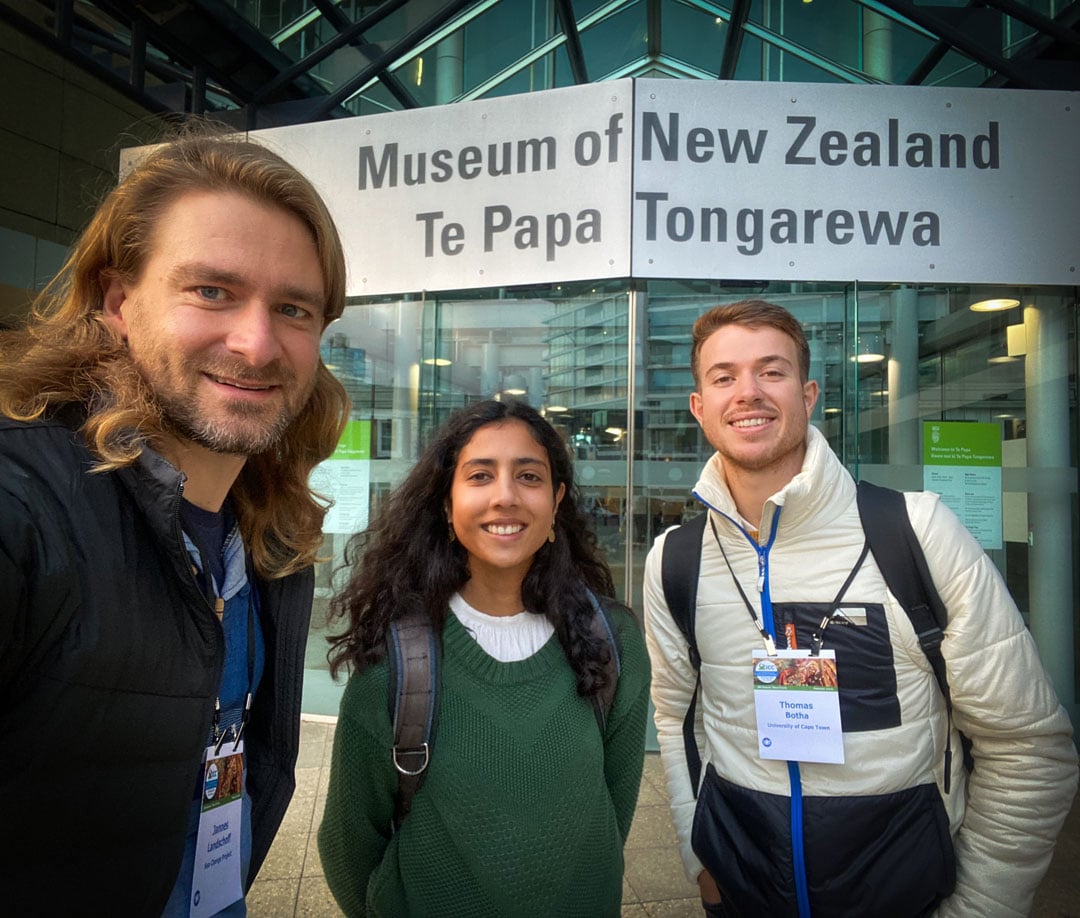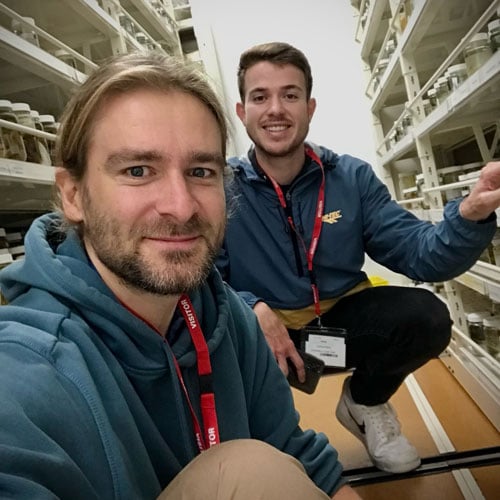Unboxing the treasures of collaboration
In 2015, amidst the whirlwind of my PhD thesis, I entered the biology building, ready for another day of research. As part of our routine, I greeted my professor, Charles Griffiths, with a cheerful “Good Morning.” Like clockwork, he responded, “Gooood Morning, Jannes!” But that morning held an unexpected surprise—Charles handed me a parcel.
With anticipation, I took hold of the package. Carefully, I unwrapped it on my workbench, revealing a treasure trove of biological museum samples. These hermit crab specimens had traversed oceans, meticulously prepared and securely sealed by my colleagues at NIWA in New Zealand. Although we had only corresponded via email, our connection led me to request these invaluable specimens. They would play a pivotal role in my research, allowing for comparisons with South African hermit crabs and contributing to significant scientific papers.

The hermit crab Cancellus makrothrix, found in the Great African Seaforest, is distinct for its occupation of remarkably large shells. It not only uses these shells to nurture its young but also provides shelter to numerous co-existing invertebrates. Unlike other Cancellus species found elsewhere, which typically inhabit rocks or sponges, Cancellus makrothrix has developed a unique ecological niche. Photo © Jannes Landschoff | Sea Change Project
Fast forward to May 2023, nearly a decade later, and I found myself amidst a gathering of crustacean enthusiasts at the 10th International Crustacean Congress in Wellington, New Zealand. Surrounded by passionate researchers, I had the privilege of sharing the tale of a remarkable hermit crab species called Cancellus makrothrix, found exclusively in South Africa. This species had eluded discovery for over a century. Working closely with my esteemed colleague and hermit crab mentor, Rafael Lemaitre, from the Smithsonian Institution, we embarked on the taxonomic redefinition of this extraordinary creature, receiving valuable feedback at the conference.
Crustaceans, whether crabs, lobsters, or the diverse array of “shrimps”, are vital inhabitants of the oceans. They play crucial roles in marine ecosystems, akin to the role insects play on land. Without them, our planet would be unrecognizable. In the Great African Seaforest, their presence weaves an intricate tapestry of life, impacting the entire food web. Studying these remarkable creatures is paramount because they are key indicators of ecosystem health and serve as important links in the complex web of marine life. By understanding their behaviours, ecological interactions, and physiological adaptations, we can gain insights into our oceans’ overall functioning and resilience. This significance drives our passion for sharing stories and knowledge about these fascinating creatures through the 1001 Seaforest Species project.

The South African delegation at the ICC10 in Wellington in front of the Te Papa conference venue. Left to right: Jannes Landschoff (Sea Change Project and Stellenbosch University), Nasreen Peer (Stellenbosch University), and Arno Botha (PhD student SAEON and University of Cape Town).
The conference also highlighted the need for greater representation from South Africa and the African continent. I often find myself as one of the few representatives at these gatherings, a sobering thought considering the remarkable biodiversity of Africa. This time, alongside my colleagues Nasreen and Arno, we formed the South African and African delegation, striving to amplify our presence and voices.

For students of Crustacea a museum collection feels like being in a candy store. The NIWA collection is home to 300,000 samples. For more info click on this image. Photo © Jannes Landschoff | Sea Change Project
As the congress drew to a close, we embarked on a special visit to the NIWA invertebrate collections. Stepping into the facility, a rush of memories flooded my mind. Standing before the very shelf that once held the hermit crabs from the parcel that Charles handed me on that fresh morning many years ago, I felt a sense of completion. The closing of this circle felt like a testament to the power of collaboration, knowledge exchange, and the insatiable curiosity that drives scientific exploration.
And so, the journey continues. There are always more species waiting to be discovered and described and countless boxes of knowledge are yet to be opened. Through specialized research meetings and international friendships, we propel ourselves forward, unlocking the natural world’s secrets and deepening our understanding of Earth’s remarkable biodiversity.
